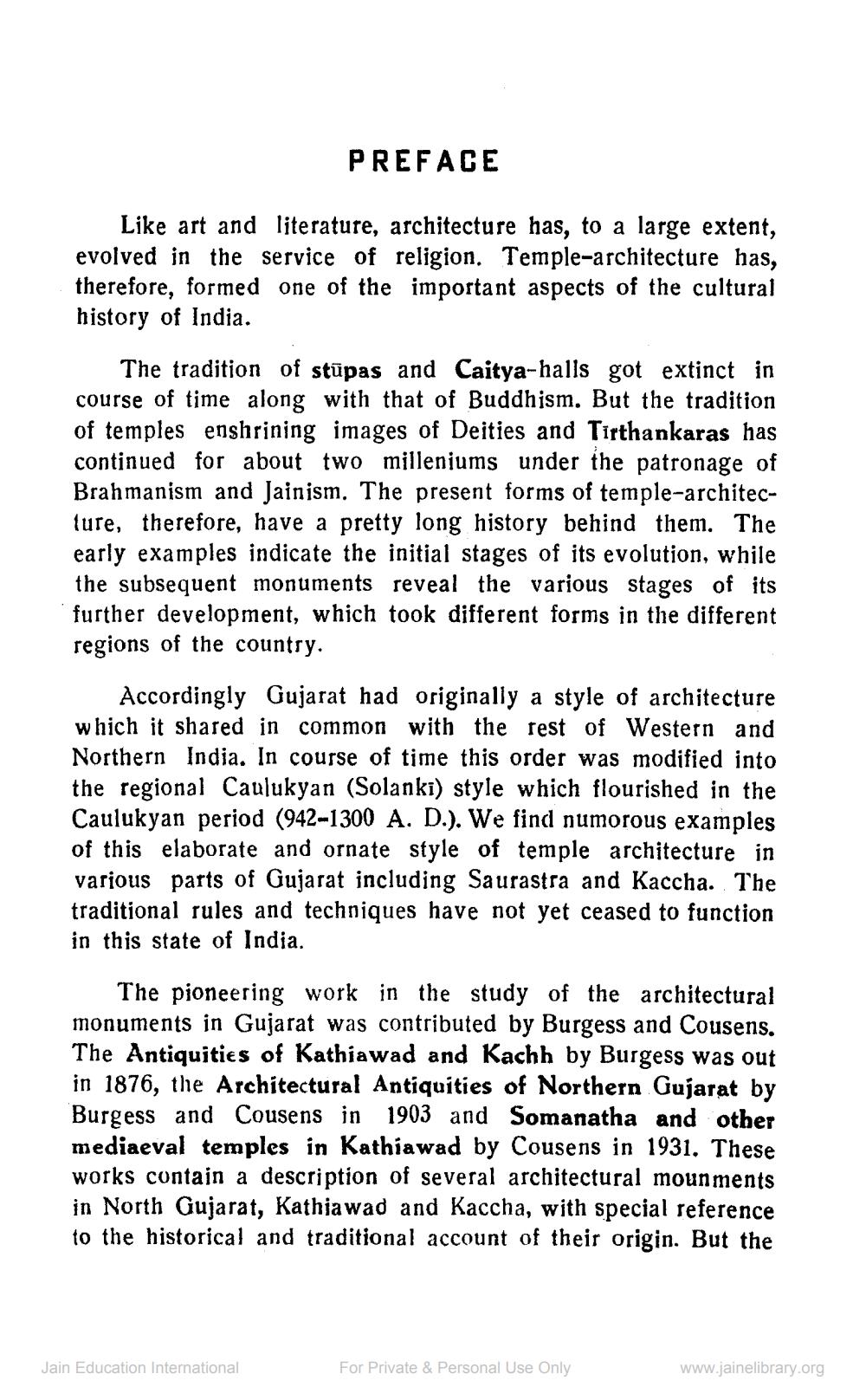Book Title: Structural Temples of Gujarat Author(s): Kantilal F Sompura Publisher: Gujarat University Ahmedabad View full book textPage 6
________________ PREFACE Like art and literature, architecture has, to a large extent, evolved in the service of religion. Temple-architecture has, therefore, formed one of the important aspects of the cultural history of India. The tradition of stūpas and Caitya-halls got extinct in course of time along with that of Buddhism. But the tradition of temples enshrining images of Deities and Tirthankaras has continued for about two milleniums under the patronage of Brahmanism and Jainism. The present forms of temple-architecture, therefore, have a pretty long history behind them. The early examples indicate the initial stages of its evolution, while the subsequent monuments reveal the various stages of its further development, which took different forms in the different regions of the country. Accordingly Gujarat had originally a style of architecture which it shared in common with the rest of Western and Northern India. In course of time this order was modified into the regional Caulukyan (Solanki) style which flourished in the Caulukyan period (942-1300 A. D.). We find numorous examples of this elaborate and ornate style of temple architecture in various parts of Gujarat including Saurastra and Kaccha. The traditional rules and techniques have not yet ceased to function in this state of India. The pioneering work in the study of the architectural monuments in Gujarat was contributed by Burgess and Cousens. The Antiquities of Kathiawad and Kachh by Burgess was out in 1876, the Architectural Antiquities of Northern Gujarat by Burgess and Cousens in 1903 and Somanatha and other mediaeval temples in Kathiawad by Cousens in 1931. These works contain a description of several architectural mounments in North Gujarat, Kathiawad and Kaccha, with special reference to the historical and traditional account of their origin. But the Jain Education International For Private & Personal Use Only www.jainelibrary.orgPage Navigation
1 ... 4 5 6 7 8 9 10 11 12 13 14 15 16 17 18 19 20 21 22 23 24 25 26 27 28 29 30 31 32 33 34 35 36 37 38 39 40 41 42 43 44 45 46 47 48 49 50 51 52 53 54 55 56 57 58 59 60 61 62 ... 868
